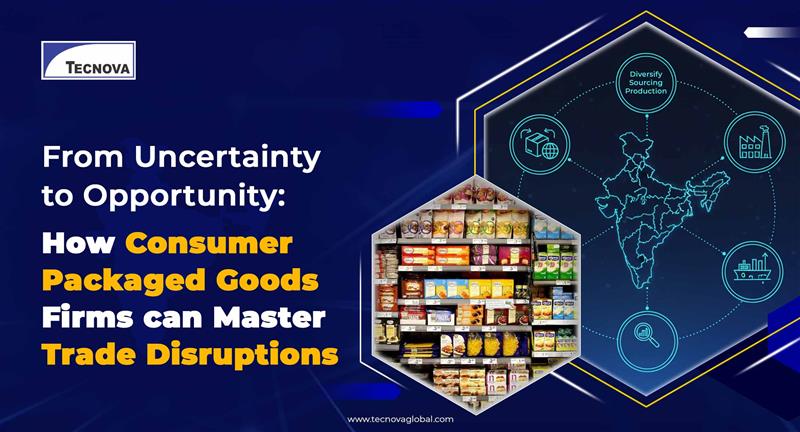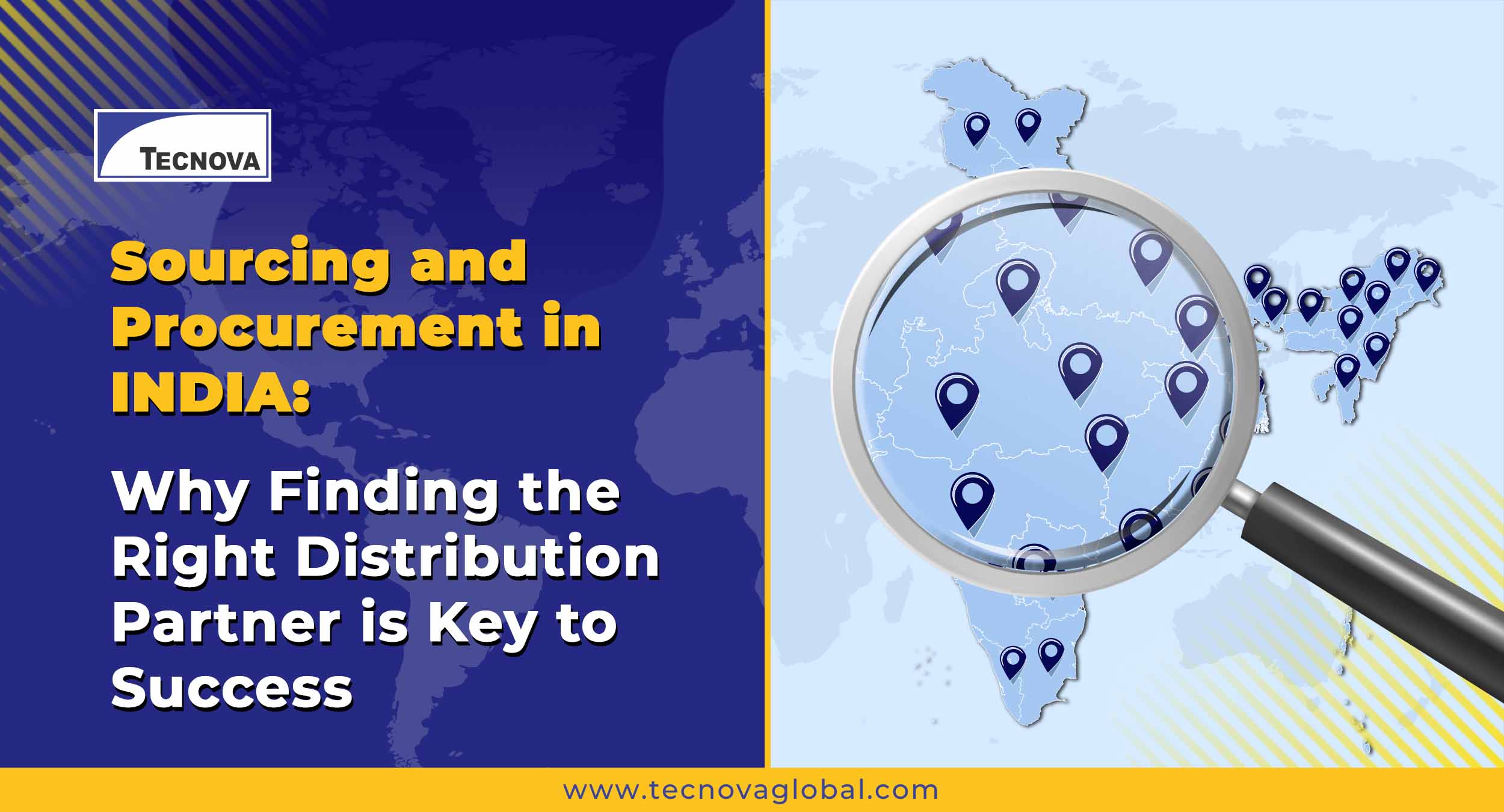“CPG Tariff Disruption: Top 5 Strategies for Long-term Success"
Is your CPG business facing constant tariff disruptions in India?
Recent research shows that more than 47% of global businesses consider rising tariffs and cross-border trade issues as a top threat.
For global Consumer Packaged Goods (CPG) companies operating in India, tariff disruptions have become a consistent concern. In FY25 alone, Indian exports to the U.S. declined 16.3%, from USD 8 billion in July to USD 6.7 billion in August, after doubling the U.S. tariff to 50%.
This shift in trade policies concerning CPG firms is known as the CPG tariff disruption. In this blog, we will walk you through 5 smart strategies that allow you to tackle this issue with ease and stay competitive.
Read along to find a bonus tip at the end!
5 ways to win against CPG Tariff Disruption in India
1. Diversify your supply chain
The key CPG strategy to manage tariff disruption is to never rely on one supplier or a country. If a company sources all its materials from a certain country and tariff rises in that import route, its production cost will spike.
To reduce its spending on import duties, a leading multinational CPG company shifted from the Japanese and Swedish manufacturers to the Indian brand for thin stainless steel strips to manufacture razors. This shift has helped the company to maintain its cost margin despite rising steel tariffs.
As per the latest announcement, the United States subsidiary of an Indian CPG brand will produce at the local facility in the U.S. for the American market. This will help in reducing their dependence on imports while elevating sales.
Action Plan:
● Identify alternate suppliers in low-tariff or tariff-free zones
● Increase local sourcing to avoid import duties
● Set up multi-country sourcing centres to reduce over-dependence on any single market
2. Build a tariff nerve centre
Like a central nerve centre in a physical body, a tariff nerve centre acts as the taxation authority in a global industrial body. It closely monitors everything related to tariffs, trade policies and legal changes.
The department will be able to forecast the changes and respond to CPG tariff disruptions swiftly. Not only does it help to establish a uniform action plan, but it also enables real-time awareness across the departments about statutory changes.
When the United States' reciprocal tariff increased in 2025, first 25% and then an additional 25% effective from August 27th, most Indian consumer packaged goods experienced a 50% duty.
However, certain products are affected the most, and a tariff nerve center at your CPG company will help you spot them right away. For example, milk products (butter milk or fermented milk) faced a rate of 56.46% first, and later it increased to 81.46%. Additionally, the U.S. tariff rate on milk powder was 30.8% initially and then became 55.84%.
Action Plan:
● Establish a nerve centre to track global and Indian tariff updates
● Communicate risks across procurement and financing
● Run scenario planning and ‘what-if’ models to find alternatives
3. Optimise pricing and explore alternative sourcing
One of the many CPG tariff disruption industry challenges is increased cost. Often, brands tend to absorb this rising cost to stay relevant in the market, losing their profits. The easiest way to fix this is by opting for a cost-efficient supply chain, logistics and other inputs.
By optimising your pricing and re-imagining your cost margin, you will get a complete picture of how money flows within the company and the spending trends, including tariffs, customs, shipping charges, etc.
Considering alternative sourcing is another part of cost optimisation. Importing from low-tariff areas or shifting to the domestic supply chain can significantly lead to cost reduction.
For example, under the India-UK Free Trade Agreement (FTA) or the Comprehensive Economic and Trade Agreement (CETA), India imposed zero duty on smartphones, inverters, modems, optical fibres, etc., facilitating seamless cross-border trading.
Action Plan:
● Adjust pricing dynamically based on tariff impacts
● Use value engineering to revise product inputs
● Explore domestic manufacturing under India’s Production Linked Incentive (PLI) schemes to offset import tariffs
4. Strengthen operations and contingency planning
Interestingly, as per many experts, planning for disruption is the key to managing CPG tariff disruption. Companies must be able to handle the concern not just diplomatically but operationally. Overrunning costs due to tariff shifts can bring down the profit margin.
However, strategic operational efficiency, like lean operations, good supply chain visibility and strong vendor relationships, aids in maintaining a balance.
With the looming 50% tariff threat, the textile belt of Gujarat, from the composite mills in Ahmedabad to Surat’s fabric hub, is experiencing a high rate of order cancellations. Since most of these companies are working on a thin margin of 13-15% EBITDA, it becomes difficult to absorb the cost.
Action Plan:
● Maintain an inventory buffer of 15-20% for SKUs in demand or in high risk
● Increase multi-modal logistics capacities or alternate shipping routes (road, rail, port)
● Establish supply chain contracts with flexible terms
5. Invest in trade compliance and legal expertise
Frequent shifts in tariffs are often accompanied by anti-dumping rules, countervailing duties and updated customs requirements. Non-compliance with these can lead to hefty fines and shipment delays.
To maintain a seamless procedure, invest in legal experts to interpret tariff orders and exemptions. As per a recent report, 39% of high-growth brands leverage trade compliance to gain a competitive advantage.
Action Plan:
● Hire trade compliance experts familiar with Indian customs and tariff laws
● Regularly audit import or export documentation for accuracy
● Use tech-led tools for tariff classification and duty drawback management
Bonus Tip: Local partnerships for market entry and expansion
If you are entering or expanding in India, partnering with local experts is an effective way to maintain the cost margin in tariff uncertainty. Collaboration with local brands will help CPG brands:
● Get a prompt and insider update on regulatory changes even before the announcement.
● Experience a hassle-free licensing and approval process through established networks.
● Maintain cultural and commercial alignment along with the consumer needs
Many global CPG giants have followed this tip to establish a long-term profitable business in the diverse market of India amidst tariff disruption.
How do strategies help in CPG Tariff Disruption?
As per many trade experts, CPG tariff disruption will not slow down. The global trade tension will continue to grow in the upcoming years. Therefore, without a structured response to this tariff trouble, CPG companies will encounter:
● A significant loss in manufacturing
● Shrunk cost margins
● Consumer shifts to local brands for better pricing
However, with the right CPG strategy to manage tariff disruption, companies can turn these challenges into a competitive edge.
How can Tecnova help CPG Companies manage Tariff Disruption?
Tecnova is one of India’s most experienced consulting firms for global CPG companies interested in entering the Indian market. We offer a range of services, including:
● Regulatory and compliance advisory
● Market entry strategy and partner identification
● Supplier development and due diligence
● Supply chain redesign for tariff optimisation
With over 40 years of Indian market knowledge, Tecnova helps Consumer Packaged Goods (CPG) companies to stay ahead of CPG tariff disruption. We optimise supply chains and build cost-effective strategies to help you establish long-term growth in India’s dynamic market.
References
https://shorturl.at/7dD7e
https://shorturl.at/mk109
https://shorturl.at/TREn0
https://shorturl.at/Nym5J
Driving Smart Mobility with Indian Supply Chain Expertise
Winning Strategies for Food Brands in India
How Your Indian Subsidiary Can Grow the Fastest Among Global Subsidiaries





.png)








.png)





.jpeg)

















.png)

.png)









.jpg)




.jpg)
























































